Search Result
Results for "
bridge
" in MedChemExpress (MCE) Product Catalog:
8
Biochemical Assay Reagents
1
Isotope-Labeled Compounds
| Cat. No. |
Product Name |
Target |
Research Areas |
Chemical Structure |
-
- HY-121083
-
|
|
Others
|
Others
|
|
Aerugidiol is a bridge-head oxygenated sesquiterpene isolated from the rhizomes of Curcuma aeruginosa .
|
-
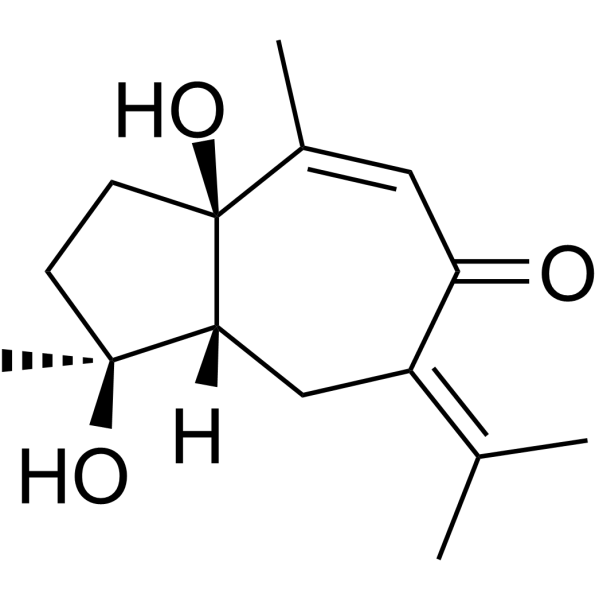
-
- HY-P4320
-
|
|
Integrin
|
Cancer
|
|
Cys-Arg-Gly-Asp-Phe-Pro-Ala-Ser-Ser-Cys (Disulfide bridge:cys1-cys10), a decapeptide containing a cyclic RGD active sequence, is an Integrin αIIbβ3 antagonist that inhibits platelet and Adhesion of proMMP-13 .
|
-
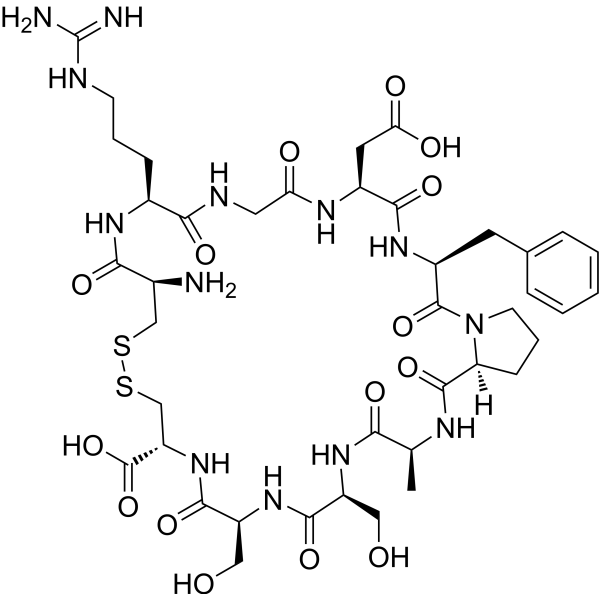
-
- HY-163331
-
|
|
Antibiotic
Bacterial
|
Infection
|
|
Cresomycin is a bridged macrobicyclic antibiotic that can bind to the bacterial ribosome. Cresomycin exhibits efficacy against both Gram-positive and Gram-negative bacteria, including multidrug-resistant strains of Staphylococcus aureus, Escherichia coli, and Pseudomonas aeruginosa .
|
-
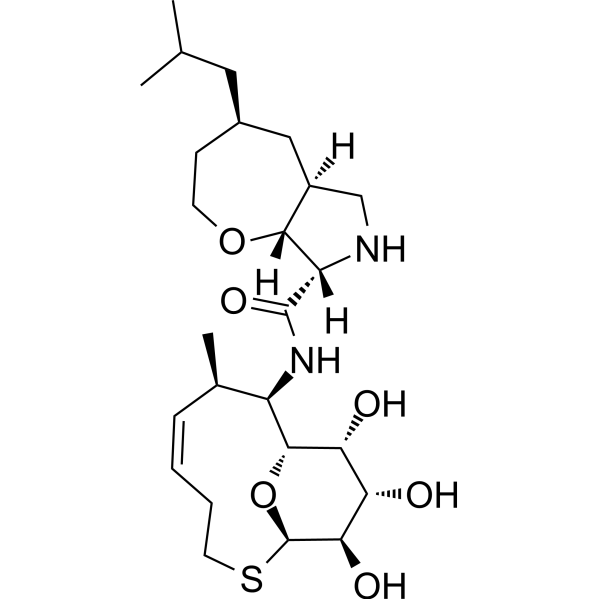
-
- HY-P3314
-
-
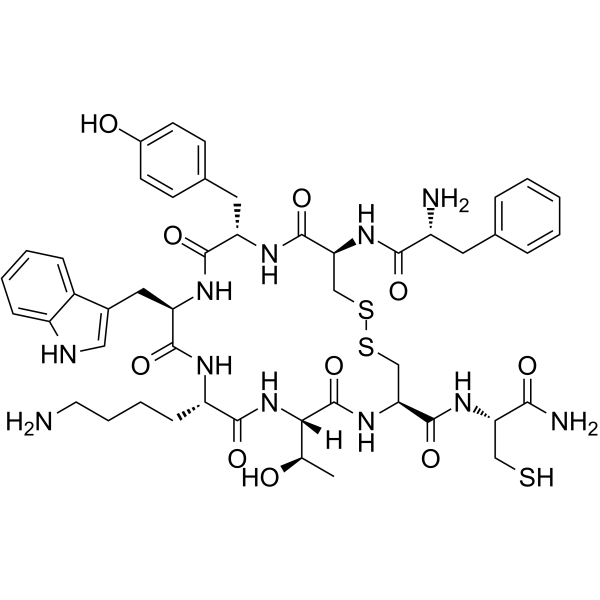
-
- HY-N7534
-
|
|
Others
|
Others
|
|
(+)-Epipinoresinol is a lignan compound. CYP81Q3 specifically catalyzes methylenedioxy bridge (MDB) formation in (+)-Epipinoresinol to produce (+)-Pluviatilol .
|
-
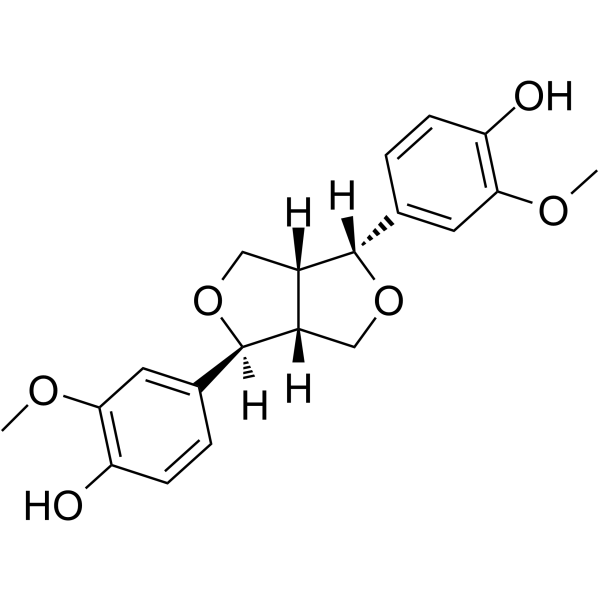
-
- HY-111999A
-
|
|
STING
|
Cancer
|
|
E7766 diammonium salt is a macrocycle-bridged STING agonist with a Kd of 40 nM. E7766 diammonium salt shows potent pan-genotypic and antitumor activities .
|
-
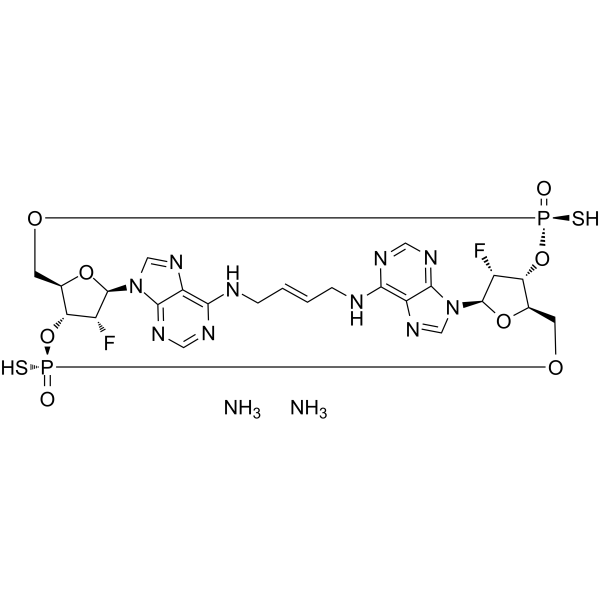
-
- HY-111999B
-
|
|
STING
|
Cancer
|
|
E7766 disodium is a macrocycle-bridged STING agonist with a Kd of 40 nM. E7766 disodium shows potent pan-genotypic and antitumor activities .
|
-
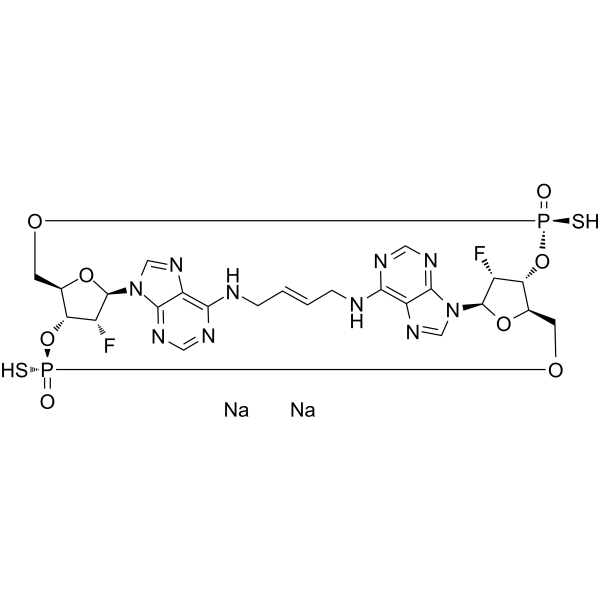
-
- HY-N10766
-
|
|
Others
|
Others
|
|
Ampelopsins F is a bridged plant oligostilbene that can be isolated from Ampelopsis brevipedunculata var. hancei roots. Ampelopsins F is a resveratrol dimer .
|
-

-
- HY-P9940
-
|
|
Factor VIII
|
Cardiovascular Disease
|
|
Emicizumab is a bispecific monoclonal antibody that bridges activated factor IX and factor X to replace the function of missing activated factor VIII, thereby restoring hemostasis. Emicizumab can be used for hemophilia A research .
|
-

-
- HY-P5165
-
|
|
Potassium Channel
|
Inflammation/Immunology
|
|
Maurotoxin is a 34-residue and four disulde-bridged toxin that can be isolated from the chactoid scorpion (Scorpio maurus). Maurotoxin inhibits the Shaker potassium channels (ShB) K + current with an IC50 of 2 nM .
|
-
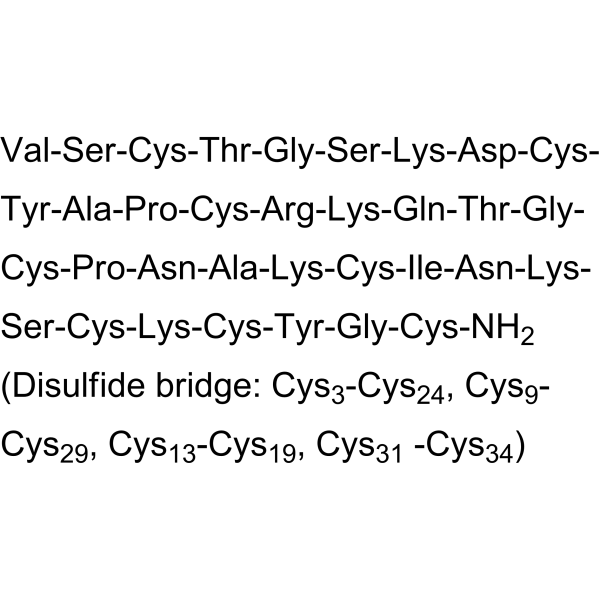
-
- HY-N11977
-
|
|
Others
|
Others
|
|
Stenophyllol B (compound 4) is a trimeric stilbene with bicyclic and bridged tricyclic skeletons. Stenophyllol B was first discovered in the dipterocarps plant and has been found in many species of Hopea, Neobalanocarpus, Shorea, Stemonoporus and Vateri .
|
-
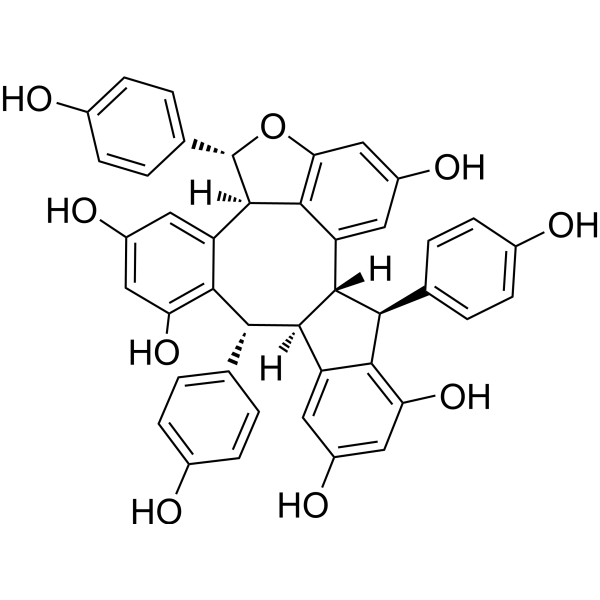
-
- HY-P5816
-
|
|
Sodium Channel
|
Neurological Disease
|
|
BmK-M1 is a scorpion toxin, and is composed of 64 amino acids cross-linked by four disulfide bridges. BmK-M1 inhibits Na + channel and can be considered both as a cardiotoxin and a neurotoxin .
|
-

-
- HY-129960S
-
|
|
Isotope-Labeled Compounds
|
Others
|
|
Selenocystine-77Se2 is a stable isotope labelled amino acid. L-Selenocystine is a diselenide-bridged amino acid. L-Selenocystine is a redox-active selenium compound that has both anti- and pro-oxidant actions.
|
-

-
- HY-P1631
-
|
|
Bacterial
|
Infection
|
|
Polyphemusin I is a natural antimicrobial peptide with excellent antimicrobial activity against Gram-negative and Gram-positive bacteria. Polyphemusin I contains 18 amino acids and is stabilized into an amphiphilic, antiparallel β-hairpin by two disulfide bridges .
|
-
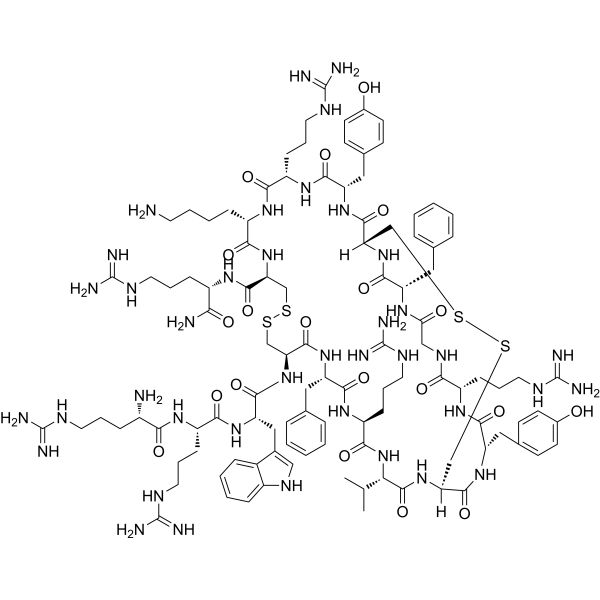
-
- HY-P5159
-
|
|
Sodium Channel
|
Inflammation/Immunology
|
|
Crotamine is a Na + channel modulator. Crotamine is a 42 amino acid toxin cross-linked by three disulfide bridges. Crotamine has analgesic activity. Crotamine also interacts with lipid membranes and shows myonecrotic activity. Crotamine can be isolated from Crotalus durissus terrificus venom .
|
-

-
- HY-P5160
-
|
PhlTx1
|
Sodium Channel
|
Inflammation/Immunology
|
|
Phlotoxin-1 (PhlTx1) is a 34-amino acid and 3-disulfide bridge peptide. Phlotoxin-1 can be isolated from Phlogiellus genus spider. Phlotoxin-1 is an antinociceptive agent by inhibiting NaV1.7 channel .
|
-

-
- HY-B2227
-
Lactate
3 Publications Verification
Lactic acid
|
Endogenous Metabolite
|
Metabolic Disease
Inflammation/Immunology
Cancer
|
|
Lactate (Lactic acid) is a hydroxycarboxylic acid receptor 1 (HCAR1) activator and an epigenetic modulator inducing lysine residues lactylation. Lactate is a glycolysis end-product, bridging the gap between glycolysis and oxidative phosphorylation. Lactate is an oncometabolite and has immune protective role of lactate in anti-tumor immunity .
|
-
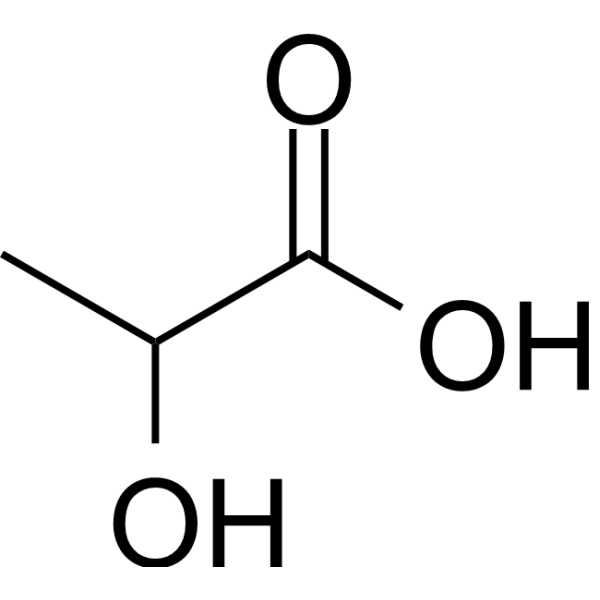
-
- HY-D0020
-
|
|
Biochemical Assay Reagents
|
Infection
Endocrinology
|
|
2,2'-Bipyridine is the unique molecular scaffold of the bioactive natural products. 2,2'-Bipyridine is extensively used as the core structure of many chelating ligands by acting as a bridge in the arrangement of the catalytic center. 2,2'-Bipyridine shows robust redox stability and hyperglycemic activity .
|
-

-
- HY-145843
-
|
|
c-Myc
|
Cancer
|
|
c-Myc inhibitor 5 (DA3) is a fluorescent, long chain-bridged bispurine that selectively targets the c-MYC G-quadruplex (KD of 16 μM). c-Myc inhibitor 5 shows inhibition on c-MYC expression rather than other G4-driven oncogenes .
|
-
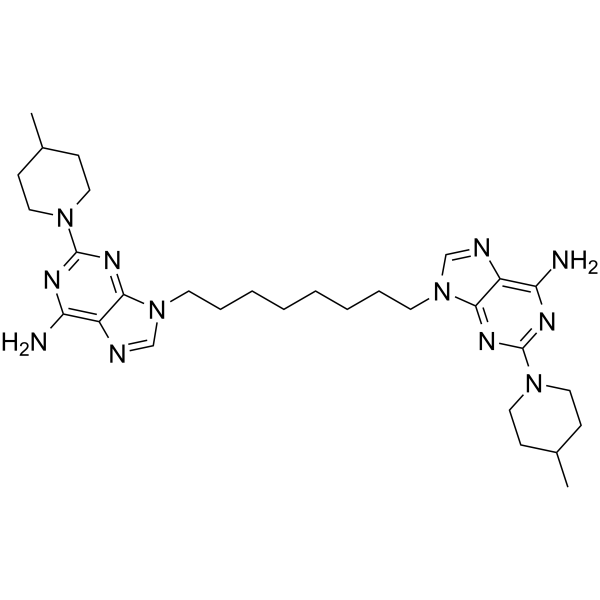
-
- HY-P5931
-
|
Potassium channel toxin alpha-KTx 6.13; SPX; α-KTx6.13
|
Potassium Channel
|
Inflammation/Immunology
|
|
Spinoxin isolated from the venom of scorpion Heterometrus spinifer, is a 34-residue peptide neurotoxin cross-linked by four disulfide bridges. Spinoxin is a potent inhibitor of Kv1.3 potassium channel (IC50 = 63 nM), considering to be valid molecular targets in the diagnostics and therapy of various autoimmune disorders and cancers .
|
-
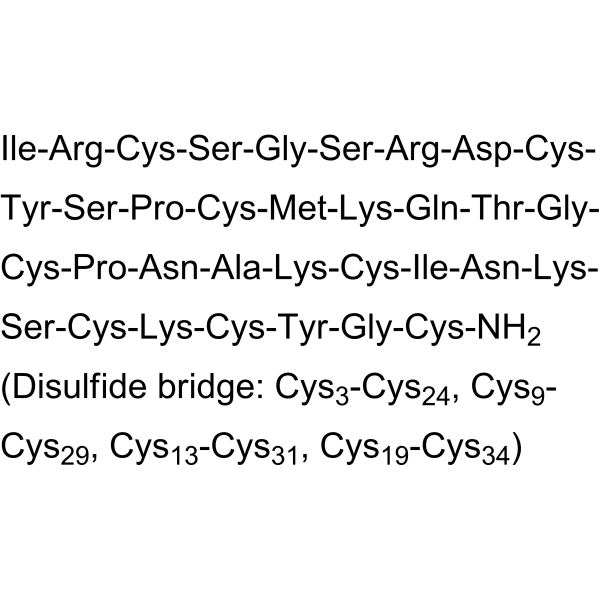
-
- HY-P5182
-
|
|
Potassium Channel
|
Inflammation/Immunology
|
|
HsTX1, from the scorpion Heterometrus spinnifer, is a 34-residue, C-terminally amidated peptide cross-linked by four disulfide bridges. HsTX1, an the inhibitor of potassium channel, with IC50 for Kv1.3 of 12 pM inhibits TEM cell activation and attenuates inflammation in autoimmunity .
|
-

-
- HY-W075836
-
|
|
Biochemical Assay Reagents
|
Others
|
|
Ferrocenylmethyltrimethylammonium (iodide) is an organometallic salt consisting of a ferrocenyl group attached to a quaternary ammonium cation via a methylene bridge. Ferrocenylmethyltrimethylammonium (iodide) has been used as a catalyst and reagent in various organic reactions, including oxidation, reduction, and CH bond activation. In addition, it is also used as a precursor for the synthesis of other organometallic compounds and as a potential material for electrochemical applications.
|
-
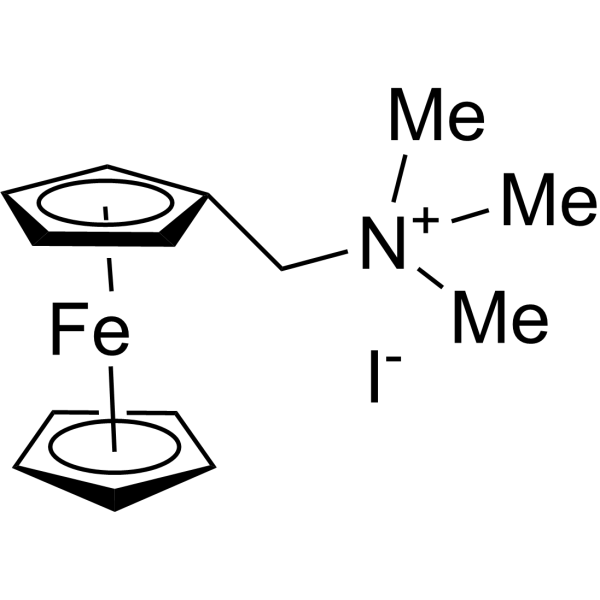
-
- HY-147207
-
|
|
Liposome
|
Others
|
|
Phospholipid-PEG-Biotin (MW 1000) is a phospholipid PEG derivative that has a biotin and a phospholipid bridged by a linear PEG linker. Phospholipid-PEG-Biotin (MW 3400) can interact with avidinylated antibodies. Phospholipid-PEG-Biotin (MW 3400) can be used to modify liposome and cells surface, and pancreatic islets for cell transplantation .
|
-
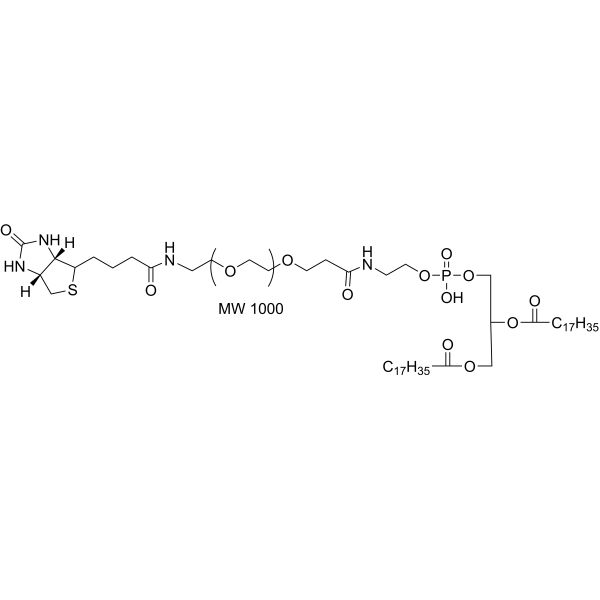
-
- HY-147207B
-
|
|
Liposome
|
Others
|
|
Phospholipid-PEG-Biotin (MW 3400) is a phospholipid PEG derivative that has a biotin and a phospholipid bridged by a linear PEG linker. Phospholipid-PEG-Biotin (MW 3400) can interact with avidinylated antibodies. Phospholipid-PEG-Biotin (MW 3400) can be used to modify liposome and cells surface, and pancreatic islets for cell transplantation .
|
-
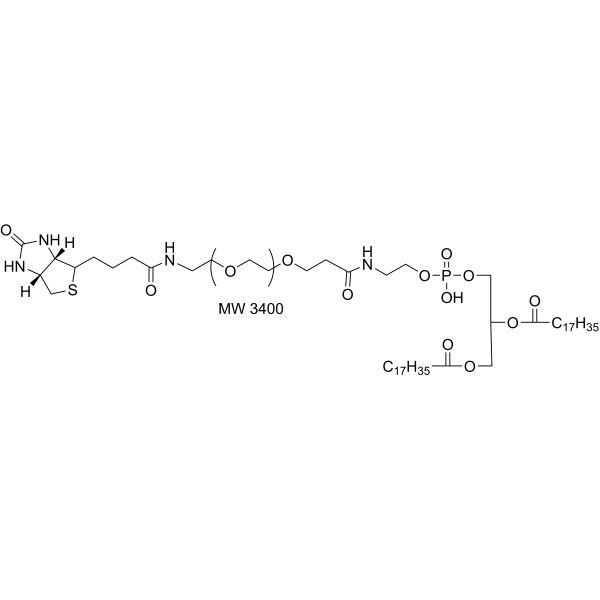
-
- HY-147207D
-
|
|
Liposome
|
Others
|
|
Phospholipid-PEG-Biotin (MW 10000) is a phospholipid PEG derivative that has a biotin and a phospholipid bridged by a linear PEG linker. Phospholipid-PEG-Biotin (MW 3400) can interact with avidinylated antibodies. Phospholipid-PEG-Biotin (MW 3400) can be used to modify liposome and cells surface, and pancreatic islets for cell transplantation .
|
-
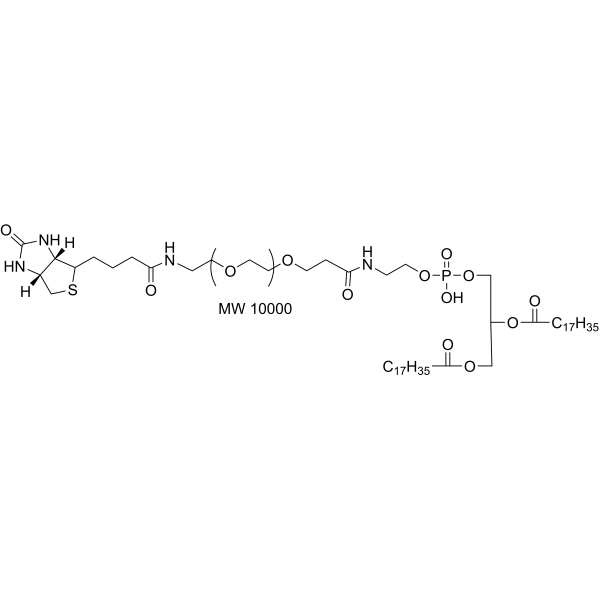
-
- HY-147207E
-
|
|
Liposome
|
Others
|
|
Phospholipid-PEG-Biotin (MW 20000) is a phospholipid PEG derivative that has a biotin and a phospholipid bridged by a linear PEG linker. Phospholipid-PEG-Biotin (MW 3400) can interact with avidinylated antibodies. Phospholipid-PEG-Biotin (MW 3400) can be used to modify liposome and cells surface, and pancreatic islets for cell transplantation .
|
-

-
- HY-P5820
-
|
|
Calcium Channel
|
Neurological Disease
|
|
ω-Conotoxin Bu8 is a ω-conotoxin, which consists of 25 amino acid residues and three disulfide bridges. ω-Conotoxin Bu8 selectively and potently inhibits depolarization-activated Ba2+ currents mediated by rat CaV2.2 expressed in HEK293T cells (IC50= 89 nM) .
|
-
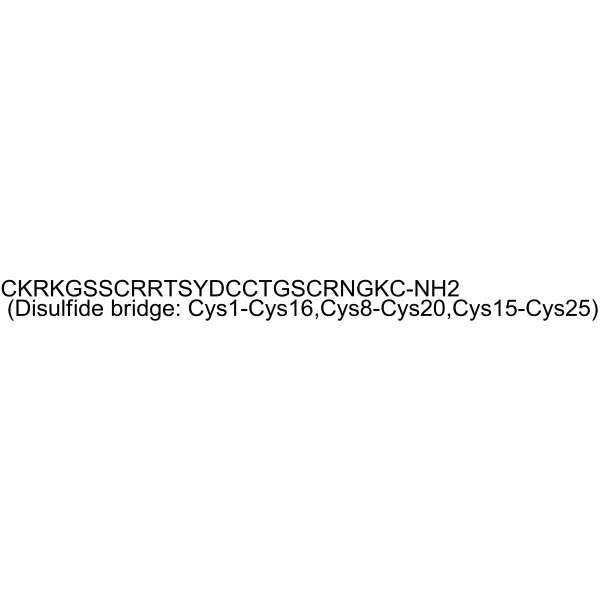
-
- HY-P5182A
-
|
|
Potassium Channel
|
Inflammation/Immunology
|
|
HsTX1 (TFA) toxin, from the scorpion Heterometrus spinnifer, is a 34-residue, C-terminally amidated peptide cross-linked by four disulfide bridges. HsTX1 (TFA) is an the inhibitor of potassium channel, with IC50 for Kv1.3 of 12 pM and inhibits TEM cell activation and attenuates inflammation in autoimmunity .
|
-

-
- HY-D1568
-
|
|
Fluorescent Dye
|
Others
|
|
Sulfo-Cy7.5 NHS ester is a near infrared water soluble hydrophilic dye, also is an NHS ester for the modification of amine groups. Sulfo-Cy7.5 NHS ester contains a trimeth ylene bridge and has a linker arm for its attachment to proteins, peptides, and other molecules. Sulfo-Cy7.5 NHS ester can be used for the research of NIR imaging applications .
|
-

-
- HY-118462A
-
|
Coelenterazine 400a hydrochloride; Bisdeoxycoelenterazine hydrochloride
|
Others
|
Others
|
|
Coelenteramine (Coelenterazine) 400a hydrochloride, a derivative of Coelenterazine, is a Renilla luciferase (RLuc) substrate. In the presence of Coelenteramine 400a hydrochloride, RLuc can emit blue light at 395 nm . Coelenteramine 400a hydrochloride will causes color change in the bioluminescence reaction of Rluc by replacing the sulfur and oxygen heteroatoms of the methylene bridge. Coelenteramine 400a hydrochloride provides higher signal resolution and can be used in the research of bioluminescence resonance energy transfer (BRET) .
|
-
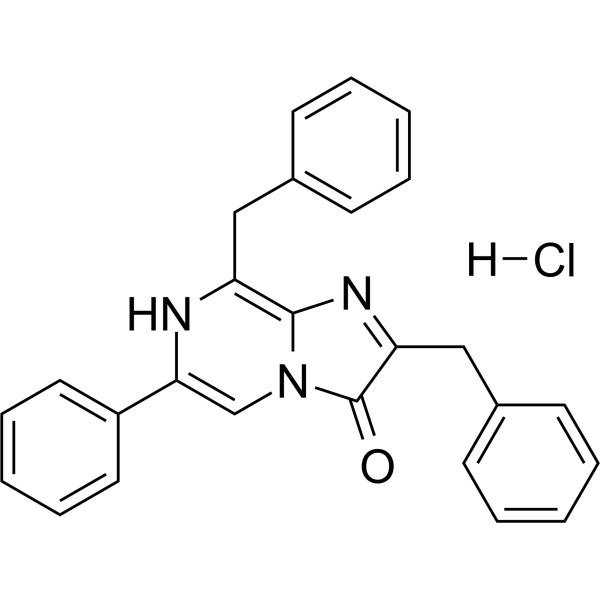
-
- HY-W134423
-
|
|
Biochemical Assay Reagents
|
Others
|
|
Agar is a jelly like substance that contains agarose and agar gel. Agar can be isolated from the cell walls of red algae species such as Gelidium and Gracilaria (Ogonori). The gelation and melting of Agar is based on the hydrogen bridge (physical gels), so the gelation is reversible. Agar is widely used in food additives, plant tissue culture, microorganisms culture media, fingerprint recognition, and medical fields .
|
-

-
- HY-118462
-
|
Coelenterazine 400a; Bisdeoxycoelenterazine
|
Fluorescent Dye
|
Others
|
|
Coelenteramine 400a (Coelenterazine 400a), a derivative of Coelenterazine, is a Renilla luciferase (RLuc) substrate. In the presence of Coelenteramine 400a, RLuc can emit blue light at 395 nm . Coelenterazine 400a will causes color change in the bioluminescence reaction of Rluc by replacing the sulfur and oxygen heteroatoms of the methylene bridge. Coelenterazine 400a provides higher signal resolution and can be used in the research of bioluminescence resonance energy transfer (BRET) .
|
-
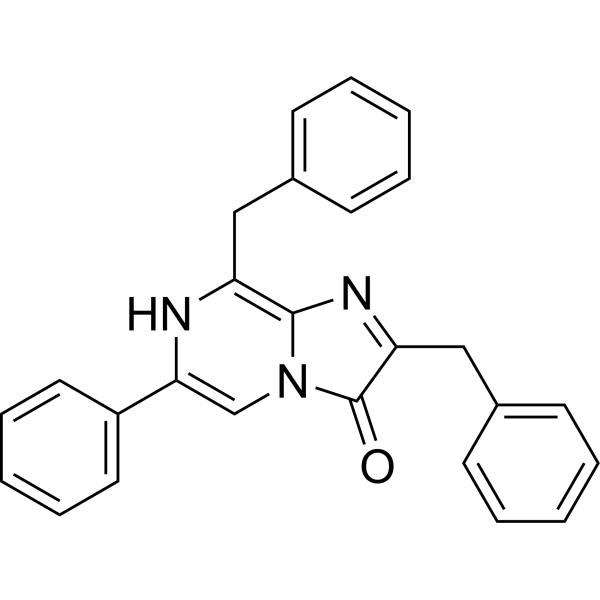
-
- HY-P2833
-
|
GSH-Px; EC 1.11.1.9
|
Glutathione Peroxidase
|
Others
|
|
Glutathione Peroxidase (GSH-Px; EC 1.11.1.9) belongs to the peroxidase family and is commonly used in biochemical research. Glutathione Peroxidase can catalyze reduced glutathione (GSH) to form a disulfide bridge with another glutathione molecule, convert it into oxidized glutathione (GSSG), and react with hydrogen peroxide or lipid peroxide reaction, reducing it to H2O. Glutathione Peroxidase is an effective antioxidant against oxidative stress .
|
-
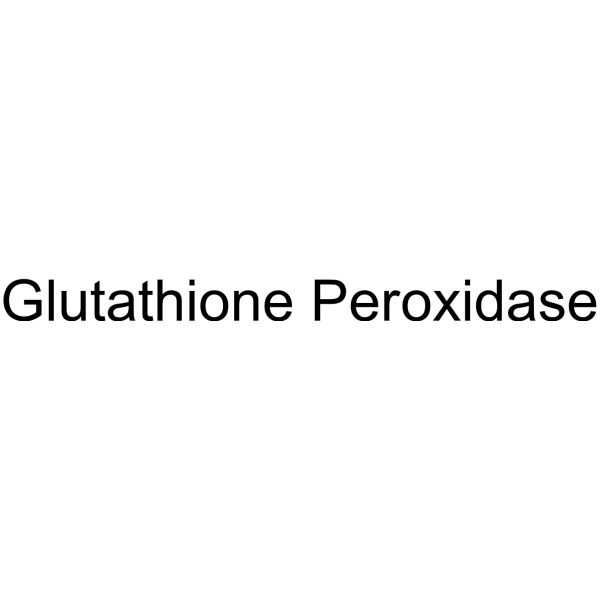
-
- HY-P2434
-
|
|
Somatostatin Receptor
|
Neurological Disease
Metabolic Disease
Cancer
|
|
AP102 is a dual SSTR2/SSTR5-specific somatostatin analog (SSA). AP102 is a disulfide-bridged octapeptide SSA containing synthetic iodinated amino acids. AP102 binds with subnanomolar affinity to SSTR2 and SSTR5 (IC50: 0.63 and 0.65 nM, respectively). AP102 does not bind to SSTR1 or SSTR3. AP102 can be used for acromegaly and neuroendocrine tumors research .
|
-
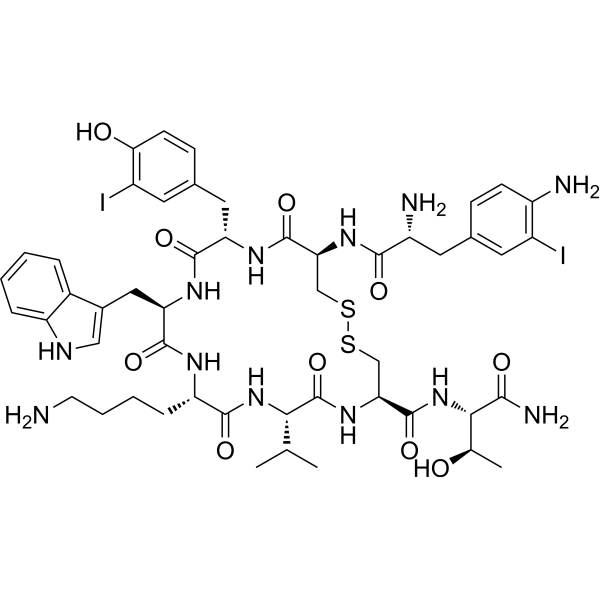
-
- HY-123941
-
|
dTAG-7
|
PROTACs
FKBP
Epigenetic Reader Domain
|
Cancer
|
|
FKBP12 PROTAC dTAG-7 (dTAG-7) is a heterobifunctional degrader. FKBP12 PROTAC dTAG-7 (dTAG-7) is a degrader of FKBP12 F36V with expression of FKBP12 F36V in-frame with a protein of interest. FKBP12 PROTAC dTAG-7 (dTAG-7) also is a selective degrader of BET bromodomain transcriptional co-activator BRD4 by bridging BET bromodomains to an E3 ubiquitin ligase CRBN .
|
-
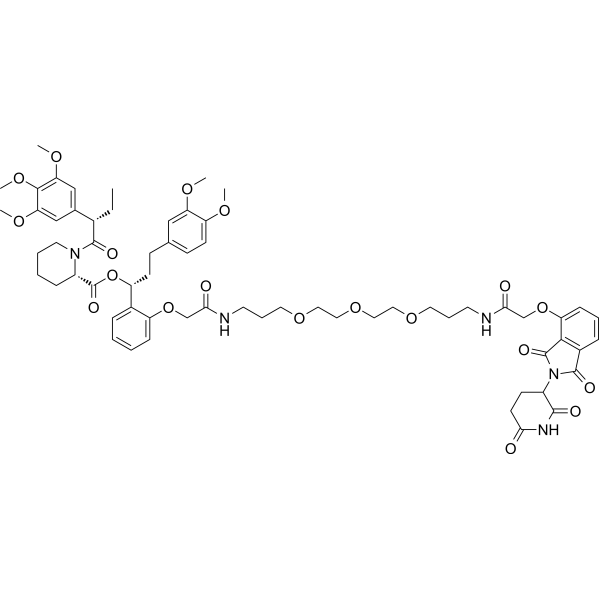
-
- HY-104086
-
|
CB7; Carrier CB7
|
Biochemical Assay Reagents
|
Others
|
|
Cucurbit[7]uril is a cyclic organic molecule consisting of seven glycoluril units linked by methylene bridges. It has a rigid barrel-like structure with two identical inlets at both ends to selectively encapsulate guest molecules of appropriate size, shape, and polarity. Cucurbit[7]uril is known for its high binding affinity for a variety of organic and inorganic guests, including drugs, amino acids, peptides, and metal ions. This property makes them promising candidates for various applications in areas such as drug delivery, catalysis, and sensing.
|
-
![Cucurbit[7]uril](//file.medchemexpress.com/product_pic/hy-104086.gif)
-
-
HY-L0120V
-
|
|
170,269 compounds
|
|
“BioDesign” approach incorporates key structural features of known pharmacologically relevant natural products (e.g. alkaloids and other secondary metabolites) into synthetically feasible medicinal chemistry scaffolds. In order to identify the privileged pharmacophores, ring systems and linkers, we have carried out statistical analysis of structural features of natural products, marketed drugs, and drug candidates.
Saturated, fused ring, spiro, and bridged systems with a tendency towards multiple chiral centers are highly privileged among natural products and marketed drugs yet these structures are very poorly represented in commercial libraries. This library addressed this market need by incorporating these privileged elements into the design of novel synthetic molecules with high molecular framework diversity, multiple stereogenic centers (≥2), and degree of saturation (Fsp3 > 0.5).
|
-
-
HY-L0094V
-
|
|
1,398,968 compounds
|
|
The Chinese National Compound Library (CNCL) composes 1.4 million compounds possessing diversified structures. Coupled with this library will be advanced sample handling, information management and quality control systems. Most compounds in the library are drug-like, conforming to “Lipinski’s Rule of Five”, such as MW < 500, logP < 5, Hydrogen Bond Donors < 5.
|
-
-
HY-L0093V
-
|
|
10,119 compounds
|
|
Diversity-based screening continues to be a vital tool for drug discovery. Efficiency and productivity can be improved by using screening libraries that offer maximum diversity whilst retaining drug-like properties. Chemspace Scaffold derived set composes 10,119 compounds, which including 3,373 scaffolds, 3 compounds per each. This library has exceptional coverage of drug-like chemical space.
|
| Cat. No. |
Product Name |
Type |
-
- HY-D1568
-
|
|
Dyes
|
|
Sulfo-Cy7.5 NHS ester is a near infrared water soluble hydrophilic dye, also is an NHS ester for the modification of amine groups. Sulfo-Cy7.5 NHS ester contains a trimeth ylene bridge and has a linker arm for its attachment to proteins, peptides, and other molecules. Sulfo-Cy7.5 NHS ester can be used for the research of NIR imaging applications .
|
-
- HY-118462
-
|
Coelenterazine 400a; Bisdeoxycoelenterazine
|
Dyes
|
|
Coelenteramine 400a (Coelenterazine 400a), a derivative of Coelenterazine, is a Renilla luciferase (RLuc) substrate. In the presence of Coelenteramine 400a, RLuc can emit blue light at 395 nm . Coelenterazine 400a will causes color change in the bioluminescence reaction of Rluc by replacing the sulfur and oxygen heteroatoms of the methylene bridge. Coelenterazine 400a provides higher signal resolution and can be used in the research of bioluminescence resonance energy transfer (BRET) .
|
| Cat. No. |
Product Name |
Type |
-
- HY-W075836
-
|
|
Biochemical Assay Reagents
|
|
Ferrocenylmethyltrimethylammonium (iodide) is an organometallic salt consisting of a ferrocenyl group attached to a quaternary ammonium cation via a methylene bridge. Ferrocenylmethyltrimethylammonium (iodide) has been used as a catalyst and reagent in various organic reactions, including oxidation, reduction, and CH bond activation. In addition, it is also used as a precursor for the synthesis of other organometallic compounds and as a potential material for electrochemical applications.
|
-
- HY-147207
-
|
|
Drug Delivery
|
|
Phospholipid-PEG-Biotin (MW 1000) is a phospholipid PEG derivative that has a biotin and a phospholipid bridged by a linear PEG linker. Phospholipid-PEG-Biotin (MW 3400) can interact with avidinylated antibodies. Phospholipid-PEG-Biotin (MW 3400) can be used to modify liposome and cells surface, and pancreatic islets for cell transplantation .
|
-
- HY-147207B
-
|
|
Drug Delivery
|
|
Phospholipid-PEG-Biotin (MW 3400) is a phospholipid PEG derivative that has a biotin and a phospholipid bridged by a linear PEG linker. Phospholipid-PEG-Biotin (MW 3400) can interact with avidinylated antibodies. Phospholipid-PEG-Biotin (MW 3400) can be used to modify liposome and cells surface, and pancreatic islets for cell transplantation .
|
-
- HY-147207D
-
|
|
Drug Delivery
|
|
Phospholipid-PEG-Biotin (MW 10000) is a phospholipid PEG derivative that has a biotin and a phospholipid bridged by a linear PEG linker. Phospholipid-PEG-Biotin (MW 3400) can interact with avidinylated antibodies. Phospholipid-PEG-Biotin (MW 3400) can be used to modify liposome and cells surface, and pancreatic islets for cell transplantation .
|
-
- HY-147207E
-
|
|
Drug Delivery
|
|
Phospholipid-PEG-Biotin (MW 20000) is a phospholipid PEG derivative that has a biotin and a phospholipid bridged by a linear PEG linker. Phospholipid-PEG-Biotin (MW 3400) can interact with avidinylated antibodies. Phospholipid-PEG-Biotin (MW 3400) can be used to modify liposome and cells surface, and pancreatic islets for cell transplantation .
|
-
- HY-W134423
-
|
|
Biochemical Assay Reagents
|
|
Agar is a jelly like substance that contains agarose and agar gel. Agar can be isolated from the cell walls of red algae species such as Gelidium and Gracilaria (Ogonori). The gelation and melting of Agar is based on the hydrogen bridge (physical gels), so the gelation is reversible. Agar is widely used in food additives, plant tissue culture, microorganisms culture media, fingerprint recognition, and medical fields .
|
-
- HY-P2833
-
|
GSH-Px; EC 1.11.1.9
|
Biochemical Assay Reagents
|
|
Glutathione Peroxidase (GSH-Px; EC 1.11.1.9) belongs to the peroxidase family and is commonly used in biochemical research. Glutathione Peroxidase can catalyze reduced glutathione (GSH) to form a disulfide bridge with another glutathione molecule, convert it into oxidized glutathione (GSSG), and react with hydrogen peroxide or lipid peroxide reaction, reducing it to H2O. Glutathione Peroxidase is an effective antioxidant against oxidative stress .
|
-
- HY-104086
-
|
CB7; Carrier CB7
|
Biochemical Assay Reagents
|
|
Cucurbit[7]uril is a cyclic organic molecule consisting of seven glycoluril units linked by methylene bridges. It has a rigid barrel-like structure with two identical inlets at both ends to selectively encapsulate guest molecules of appropriate size, shape, and polarity. Cucurbit[7]uril is known for its high binding affinity for a variety of organic and inorganic guests, including drugs, amino acids, peptides, and metal ions. This property makes them promising candidates for various applications in areas such as drug delivery, catalysis, and sensing.
|
| Cat. No. |
Product Name |
Target |
Research Area |
-
- HY-W141916
-
|
Tetraglycylglycine; Gly-Gly-Gly-Gly-Gly; NSC 96353
|
Peptides
|
Infection
|
|
Pentaglycine (Tetraglycylglycine) is a bridge containing five glycine molecules. Pentaglycine can form highly cross-linked peptidoglycan. Glucose reduced expression of pentaglycine. Pentaglycine is cleaved by lysostaphin, and occurs in the cell envelope of staphylococci .
|
-
- HY-P3222
-
|
|
Peptides
|
Endocrinology
|
|
Oxytocin antiparallel dimer is the disulfide-bridged homo peptide dimer. Oxytocin dimer has oxytocin and vasopressin-like activity with less toxic than oxytocin .
|
-
- HY-P3215
-
|
|
Peptides
|
Endocrinology
|
|
Oxytocin parallel dimer is the disulfide-bridged homo peptide dimer. Oxytocin dimer has oxytocin and vasopressin-like activity with less toxic than oxytocin .
|
-
- HY-P4320
-
|
|
Integrin
|
Cancer
|
|
Cys-Arg-Gly-Asp-Phe-Pro-Ala-Ser-Ser-Cys (Disulfide bridge:cys1-cys10), a decapeptide containing a cyclic RGD active sequence, is an Integrin αIIbβ3 antagonist that inhibits platelet and Adhesion of proMMP-13 .
|
-
- HY-P3314
-
-
- HY-P3215A
-
|
|
Peptides
|
Endocrinology
|
|
Oxytocin parallel dimer TFA is the disulfide-bridged homo peptide dimer. Oxytocin dimer has oxytocin and vasopressin-like activity with less toxic than oxytocin .
|
-
- HY-P3222A
-
|
|
Peptides
|
Endocrinology
|
|
Oxytocin antiparallel dimer TFA is the disulfide-bridged homo peptide dimer. Oxytocin dimer has oxytocin and vasopressin-like activity with less toxic than oxytocin .
|
-
- HY-P2695
-
|
|
Peptides
|
Infection
|
|
STh, an Escherichia coli heat-stable toxin, is a 19 amino acid polypeptide encompassing three disulfide bridges. STh is an antigen of interest in the search for a broad coverage enterotoxigenic Escherichia coli (ETEC) vaccine .
|
-
- HY-P5165
-
|
|
Potassium Channel
|
Inflammation/Immunology
|
|
Maurotoxin is a 34-residue and four disulde-bridged toxin that can be isolated from the chactoid scorpion (Scorpio maurus). Maurotoxin inhibits the Shaker potassium channels (ShB) K + current with an IC50 of 2 nM .
|
-
- HY-P5816
-
|
|
Sodium Channel
|
Neurological Disease
|
|
BmK-M1 is a scorpion toxin, and is composed of 64 amino acids cross-linked by four disulfide bridges. BmK-M1 inhibits Na + channel and can be considered both as a cardiotoxin and a neurotoxin .
|
-
- HY-P3825
-
|
CCAP
|
Peptides
|
Cardiovascular Disease
|
|
Crustacean cardioactive peptide (CCAP) is a insect cardioregulatory peptides that contmns 9 amino acid, first isolated from the tobacco hawkmoth, Manduca sexta. There are two cystemes at pnsttons 3 and 9 forming a disulfide bridge and the carboxyl-terminns is amldated .
|
-
- HY-P1631
-
|
|
Bacterial
|
Infection
|
|
Polyphemusin I is a natural antimicrobial peptide with excellent antimicrobial activity against Gram-negative and Gram-positive bacteria. Polyphemusin I contains 18 amino acids and is stabilized into an amphiphilic, antiparallel β-hairpin by two disulfide bridges .
|
-
- HY-P5159
-
|
|
Sodium Channel
|
Inflammation/Immunology
|
|
Crotamine is a Na + channel modulator. Crotamine is a 42 amino acid toxin cross-linked by three disulfide bridges. Crotamine has analgesic activity. Crotamine also interacts with lipid membranes and shows myonecrotic activity. Crotamine can be isolated from Crotalus durissus terrificus venom .
|
-
- HY-P5160
-
|
PhlTx1
|
Sodium Channel
|
Inflammation/Immunology
|
|
Phlotoxin-1 (PhlTx1) is a 34-amino acid and 3-disulfide bridge peptide. Phlotoxin-1 can be isolated from Phlogiellus genus spider. Phlotoxin-1 is an antinociceptive agent by inhibiting NaV1.7 channel .
|
-
- HY-129960
-
|
|
Peptides
|
Others
|
|
L-Selenocystine is a diselenide-bridged amino acid. L-Selenocystine is a redox-active selenium compound that has both anti- and pro-oxidant actions. L-Selenocystine induces an unfolded protein response, ER stress, and large cytoplasmic vacuolization in HeLa cells and has cytostatic effects in a range of cancer cell types .
|
-
- HY-P5931
-
|
Potassium channel toxin alpha-KTx 6.13; SPX; α-KTx6.13
|
Potassium Channel
|
Inflammation/Immunology
|
|
Spinoxin isolated from the venom of scorpion Heterometrus spinifer, is a 34-residue peptide neurotoxin cross-linked by four disulfide bridges. Spinoxin is a potent inhibitor of Kv1.3 potassium channel (IC50 = 63 nM), considering to be valid molecular targets in the diagnostics and therapy of various autoimmune disorders and cancers .
|
-
- HY-P5182
-
|
|
Potassium Channel
|
Inflammation/Immunology
|
|
HsTX1, from the scorpion Heterometrus spinnifer, is a 34-residue, C-terminally amidated peptide cross-linked by four disulfide bridges. HsTX1, an the inhibitor of potassium channel, with IC50 for Kv1.3 of 12 pM inhibits TEM cell activation and attenuates inflammation in autoimmunity .
|
-
- HY-P5820
-
|
|
Calcium Channel
|
Neurological Disease
|
|
ω-Conotoxin Bu8 is a ω-conotoxin, which consists of 25 amino acid residues and three disulfide bridges. ω-Conotoxin Bu8 selectively and potently inhibits depolarization-activated Ba2+ currents mediated by rat CaV2.2 expressed in HEK293T cells (IC50= 89 nM) .
|
-
- HY-P5182A
-
|
|
Potassium Channel
|
Inflammation/Immunology
|
|
HsTX1 (TFA) toxin, from the scorpion Heterometrus spinnifer, is a 34-residue, C-terminally amidated peptide cross-linked by four disulfide bridges. HsTX1 (TFA) is an the inhibitor of potassium channel, with IC50 for Kv1.3 of 12 pM and inhibits TEM cell activation and attenuates inflammation in autoimmunity .
|
-
- HY-P2434
-
|
|
Somatostatin Receptor
|
Neurological Disease
Metabolic Disease
Cancer
|
|
AP102 is a dual SSTR2/SSTR5-specific somatostatin analog (SSA). AP102 is a disulfide-bridged octapeptide SSA containing synthetic iodinated amino acids. AP102 binds with subnanomolar affinity to SSTR2 and SSTR5 (IC50: 0.63 and 0.65 nM, respectively). AP102 does not bind to SSTR1 or SSTR3. AP102 can be used for acromegaly and neuroendocrine tumors research .
|
| Cat. No. |
Product Name |
Target |
Research Area |
-
- HY-P9940
-
|
|
Factor VIII
|
Cardiovascular Disease
|
|
Emicizumab is a bispecific monoclonal antibody that bridges activated factor IX and factor X to replace the function of missing activated factor VIII, thereby restoring hemostasis. Emicizumab can be used for hemophilia A research .
|
| Cat. No. |
Product Name |
Category |
Target |
Chemical Structure |
| Cat. No. |
Product Name |
Chemical Structure |
-
- HY-129960S
-
|
|
|
Selenocystine-77Se2 is a stable isotope labelled amino acid. L-Selenocystine is a diselenide-bridged amino acid. L-Selenocystine is a redox-active selenium compound that has both anti- and pro-oxidant actions.
|
-

Your information is safe with us. * Required Fields.
Inquiry Information
- Product Name:
- Cat. No.:
- Quantity:
- MCE Japan Authorized Agent:









































![Cucurbit[7]uril](http://file.medchemexpress.com/product_pic/hy-104086.gif)


